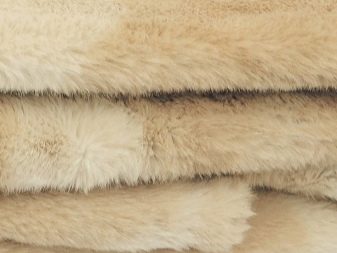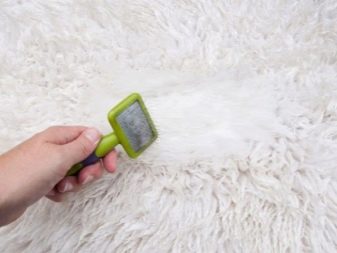How to choose a fluffy blanket and how to care for it?
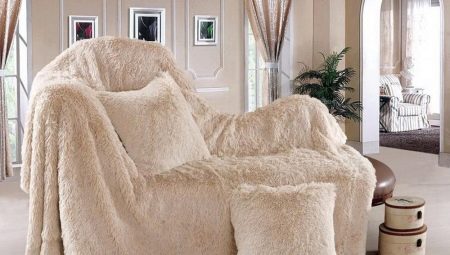
A fluffy blanket not only gives comfort, but is also an attractive addition to the interior. When buying such a product, it is important to pay enough attention to the choice of material, as well as find out in advance how to care for it.

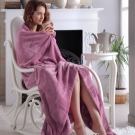
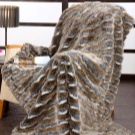
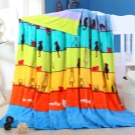
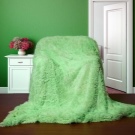
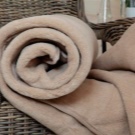
Peculiarities
A fluffy blanket is a familiar inhabitant of every second apartment. Regardless of whether it is natural or synthetic, the bedspread accumulates heat well, providing coziness and convenience to its owners. Models with long pile are also characterized by increased wear resistance - they are used for a long time without fading or losing their attractive appearance. And also the material used for shaggy capes quickly evaporates moisture, while remaining dry. A common disadvantage of such products is the rapid accumulation of dust.
There are a huge number of models on the market that differ in size, color and, of course, cost.

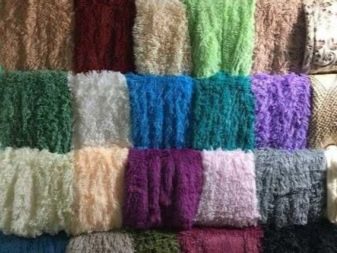
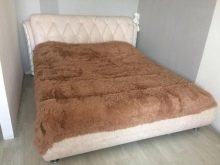
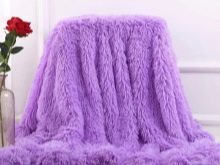
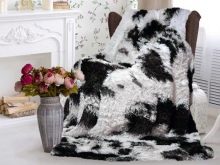
Materials (edit)
Shaggy bedspreads are created from three types of materials.
Natural
Of natural materials, the most popular is woolen fabric: made from alpaca, camel, sheep or angora wool. Sheep wool blankets have the ability to thermoregulate, absorb excess moisture and repel dirt. Breathable and elastic material retains its shape for a long time, and therefore does not require quick replacement.
Of the shortcomings, the likelihood of allergies can be distinguished, therefore, people with similar problems will not be suitable, for example, the wool of merino sheep with a long pile.
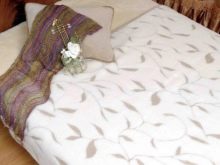

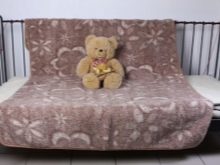
Camel wool capes are considered to be very warm, lightweight and elastic. The product is capable of absorbing almost 30% of the total weight, keeping it dry and not electrifying. The average life of the bedspread reaches 9 years. However, again, camel hair can cause allergies. In addition, the hairs of the fur prickle human skin, which is useful but not very pleasant.
Alpaca wool blankets do not fall off, do not roll or wrinkle. This blanket keeps the body temperature at a comfortable level and is also hypoallergenic.
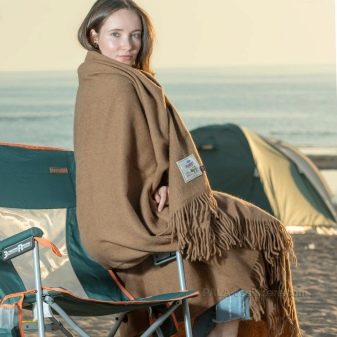
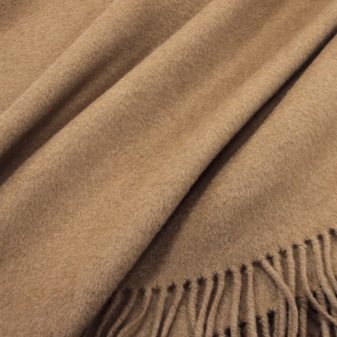
Artificial
A fleecy blanket made of artificial material can be based on acrylic, microfiber or polyester. The thing is quite easy to care for, and, in principle, it retains its original appearance for a long time, but requires frequent washings. It looks less presentable than a natural product, but it also costs less. Acrylic bedspreads look like natural wool, but they quickly lose their softness. They are easy to wash and are hypoallergenic, suitable for people with hypersensitivity. However, you should be prepared to absorb foreign odors and form pellets.
Microfiber caps, on the other hand, are always the same to the touch, but in no case should they be ironed and dried at high temperatures, otherwise the product will stretch.
The synthetic fabric is easy to care for, it will absorb moisture with high quality, but dry quickly. The material is easy to clean and does not fade. Unfortunately microfiber builds up a static charge.
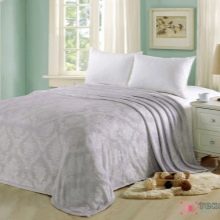

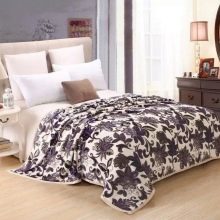
Fleece blankets are not afraid of high temperatures, sunlight and washing. Their appearance, however, is not pleasant to everyone. The disadvantages also include the gradual build-up of static voltage.
Polyester blankets are pleasant to the touch, durable and easy to clean. They do not absorb odors and are very affordable. Among the minuses are electrification, as well as shrinkage at high temperatures.
Faux fur covers are durable and resistant, but they collect dust, electrify and become pellet.
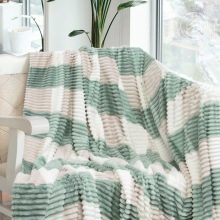
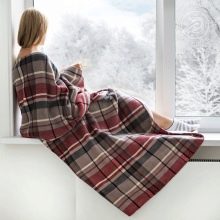
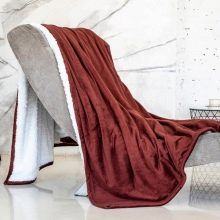
Combined
The combination of soft capes contains a mixture of fibers. For example, this can be said about a terry blanket, for the production of which about 80% of natural fibers and 20% of synthetic fibers are used.
However, most often the artificial base is supplemented with natural threads, as is the case with wool and acrylic.
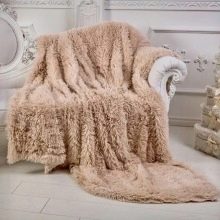

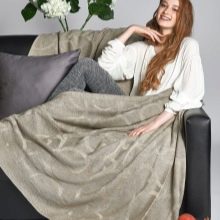
Design
The color of the fluffy blanket should be selected in such a way that it is in harmony with the color scheme that dominates the interior of the room where it is to live. In almost any style, it is possible to place monochromatic products in neutral shades - beige, white, gray, milk or cream. In classic interiors, a long-haired blanket in the color of coffee with milk or chocolate, as well as just brown, will look good. The same can be said for the shades of champagne, mint and olive. Add lightness and tenderness to the room with the help of blankets of pink, peach, pale green, calm blue and lilac, almost lavender flowers.
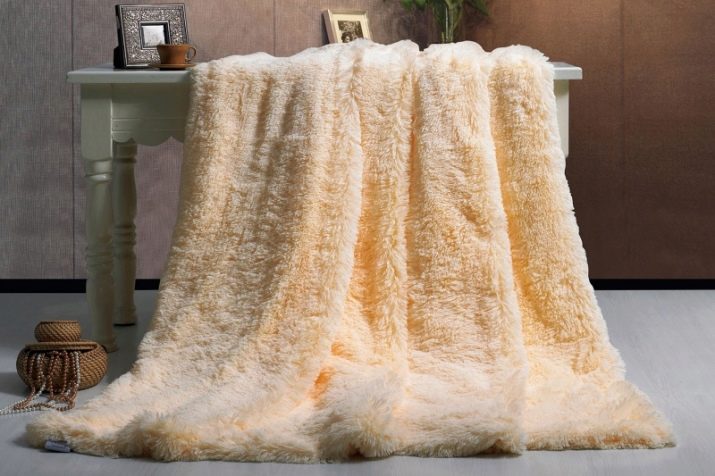
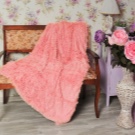
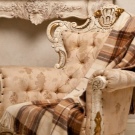
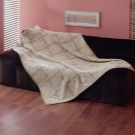
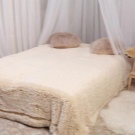
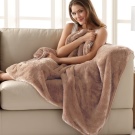
As an accent in laconic rooms, it is quite possible to use a red, yellow, blue, orange or even burgundy plaid. It is important to be careful with black models, as they are only suitable for monochrome spaces.
By the way, you can always buy a double-sided bedspread and change it depending on your mood.
When it comes to prints, to create a stylish and eye-pleasing space, it is better to opt for calm geometric patterns and interact very carefully with animal prints. The shape of the cape can be chosen in a classic rectangular or square shape, or you can give preference to unusual rounded models.
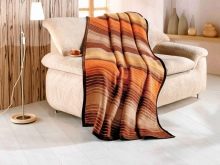
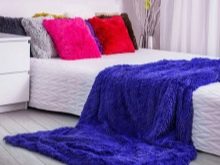
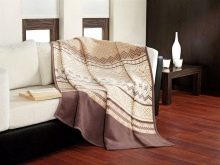
Dimensions (edit)
The dimensions of the bedspread are selected depending on where he is going to be. To cover a standard single bed, a model with sides of 190 and 140 centimeters is suitable, and for a child's berth, the same width and length, equal to 160 centimeters, will be sufficient. For a double or one and a half bed, it is better to take a cape measuring 220x240 centimeters. For a "king" bed, you will need a 240x270 blanket or even larger. The dimensions of blankets for large sofas approximately correspond to the dimensions of blankets for one and a half, double and "king" beds.
For a small sofa, 170x240 centimeters will suffice. The smallest inhabitants of the apartment purchase products measuring 75 × 75, 75 × 90, 100 × 120 or 110 × 140 centimeters.
When buying, it is important to make sure that the blanket hangs from the sides of the furniture by about 20 centimeters, but does not end up on the floor.
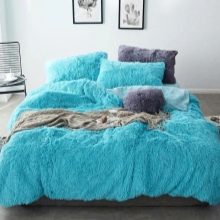
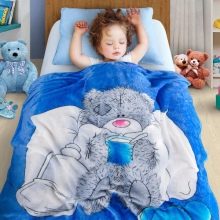
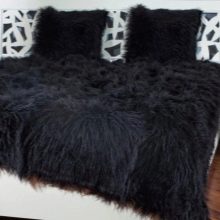
How to choose?
The choice of a soft fleecy blanket is determined by several parameters.
- The issue with the material is being resolved, each of which has its own pros and cons.
- Having determined who will use the product, you will have to choose the required size according to the dimensional grid. As a rule, the entire assortment on the market is subdivided into models intended for adults, adolescents and children.
- The pile length and thread density of the selected model are evaluated.
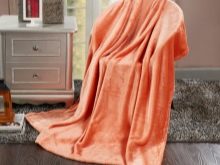
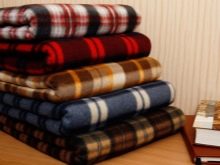
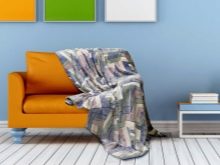
The longer the fibers, the better the product, but the more thoroughly you will have to clean its surface before washing. Otherwise, the stuck small debris will have to be removed along with the fibers. The same can be said about density: the denser the product, the longer it will last.
By the way, the heavier the bedspread, the better its density and pile length indicators.
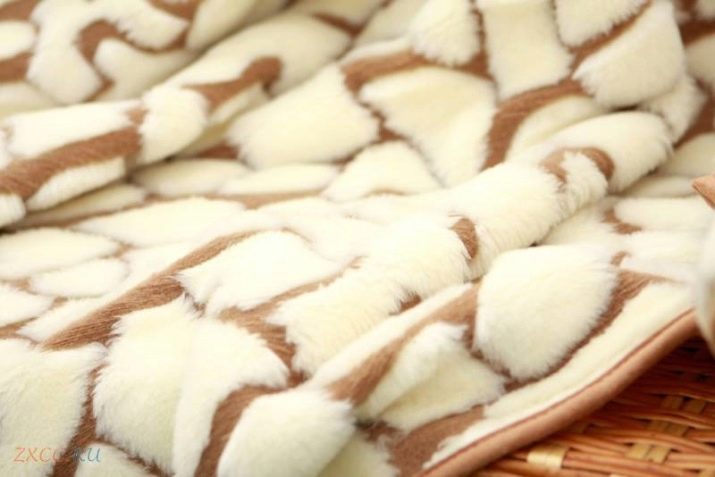
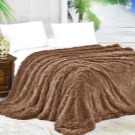
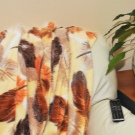


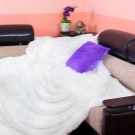
How to care?
If a fluffy blanket is made of natural material, then it is not recommended to store it in cellophane packaging - it is better to put the product in a cardboard box. An artificial bedspread does not require any special storage conditions, but it is also better not to put it in a bag, because it can become electrified. The bedspread should be removed for storage clean, neatly folded and, if possible, in a horizontal position. To avoid the appearance of creases, it is advised to use the so-called soft folding technique. It is better to place natural products on a shelf among synthetic things - this "neighborhood" reduces the likelihood of moths appearing. Sealed packaging will not help the blanket, so it makes no sense to spend money on it.
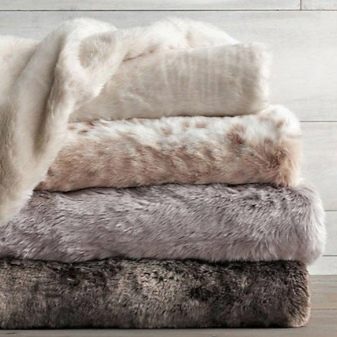
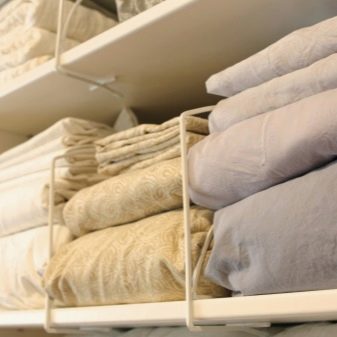
Shaggy bedspreads can be machine washed if indicated on the product label. However, this more often applies to short-haired rather than long-haired models. In the appropriate compartment of the automatic machine, it is imperative to add conditioner to the liquid detergent to make the surface soft. After washing, the product is carefully dried in a horizontal position.
It is strictly forbidden to squeeze it, as the fabric can stretch and lose its elasticity. If a fleecy blanket is stored in the closet for a long time, then it should be ventilated and shaken from time to time, smoothing out the folds.
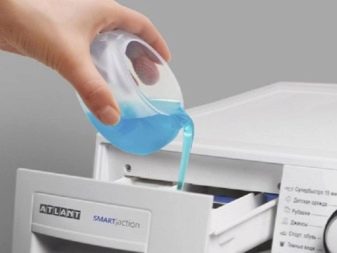
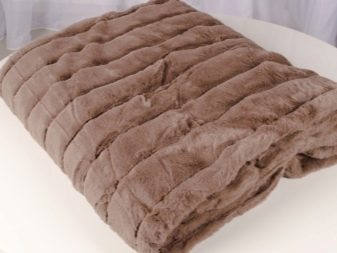
The faux fur cape can also be washed in an automatic machine, but only if the drum has sufficient capacity. The temperature regime should not exceed 35-40 degrees, this will preserve the brightness of the product and not wash out the dye. In addition, the synthetic blanket will retain its shape in such water. Before starting washing, the bedspread will need to be shaken and cleaned with a rare stiff brush, getting rid of large debris. Strong stains are treated with a stain remover designed for colored items even before loading into the device.
The product is sent to the drum, neatly rolled into a loose roll with the fibers inside. This position will help to avoid pilling and tangling of the threads. It is better to replace the powder with liquid products, since they are better washed out of the material and completely disappear after rinsing.If it is necessary to use the powder, it will first need to be diluted in a small amount of warm water.
Faux fur is processed in synthetic mode without automatic spinning.
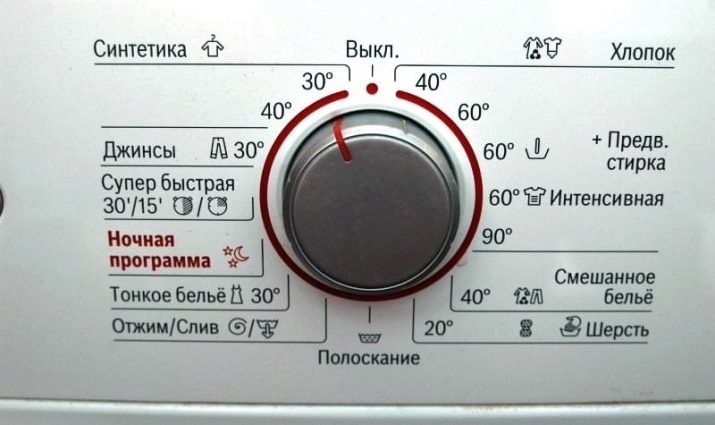
It should dry on a horizontal surface, always without ropes that create creases. Do not leave the product in direct sunlight or in a poorly ventilated area. The dried fur product should be brushed in the direction of the pile. It should be mentioned that artificial wool should be worked through regularly in this way, and not just before washing.
We must not forget that if there is cotton in the composition together with polyester fibers, it is forbidden to wash blankets at high temperatures, otherwise they will shrink and deform.
